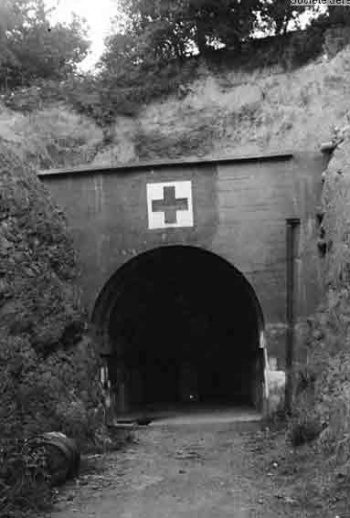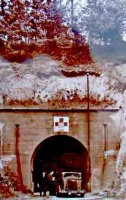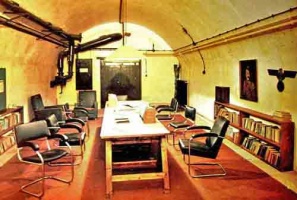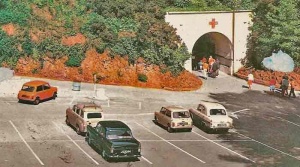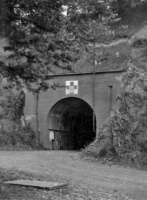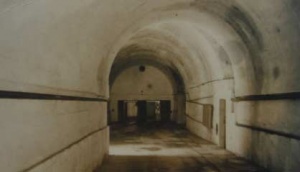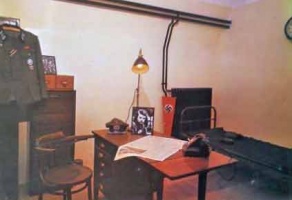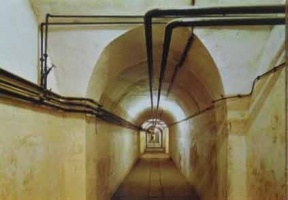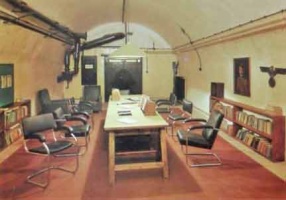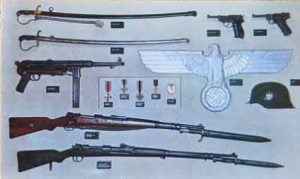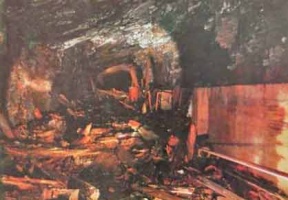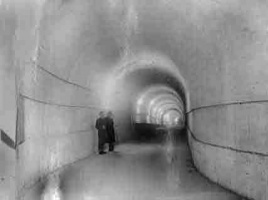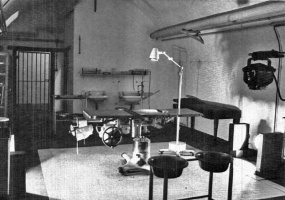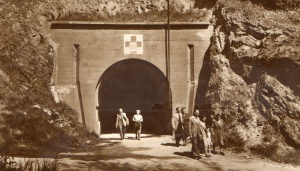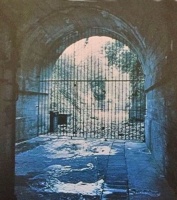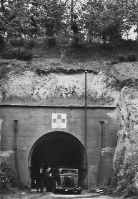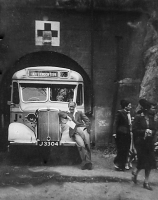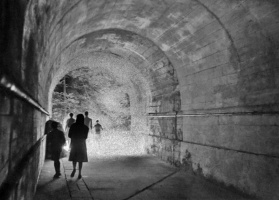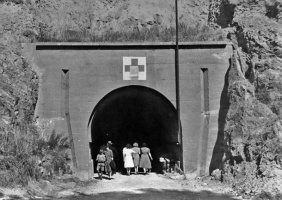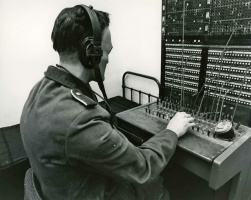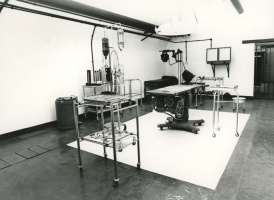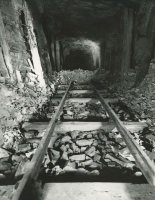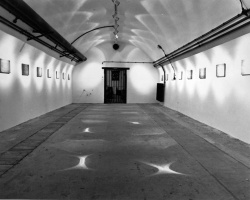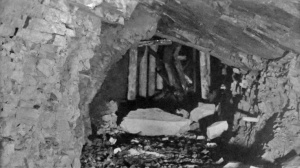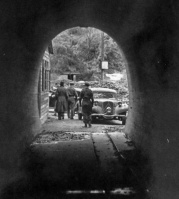Ammunition store
The tunnels were blasted out with gunpowder and handtools, and then covered with concrete. The hospital was dug into a slope, so that it would drain naturally. Its location within the hill also ensured that the temperature remained constant throughout the year.
The tunnels were originally constructed as an ammunition store and artillery barracks, but the Germans converted them to a casualty clearing station as D-Day drew nearer. Unfinished tunnels were sealed off, and air-conditioning and heating systems were sealed behing gas-proof doors. Wards were added, along with an operating theatre, a medical supply room, a casualty assessment centre and a dispensary.
Within yards of the entrance is a section of bare, splintered rock face where a simple plaque records:
- "Under these conditions men of many nations laboured to construct this hospital. Those who survived will never forget; those who did not will never be forgotten".
Hundreds of forced labourers rounded up by the Organization Todt in France, and including refugees from Spain and Morocco, were augmented by Polish and Russian prisoners of war who were treated no better than slaves and dressed in rags. These workers toiled for twelve hours a day. Serious injury was commonplace with injured workers being pulled from the rockfaces to be replaced by more unfortunates. Surprisingly there were few fatalities; it is believed that fewer than ten workers and overseers were killed in explosions or cave-ins.

